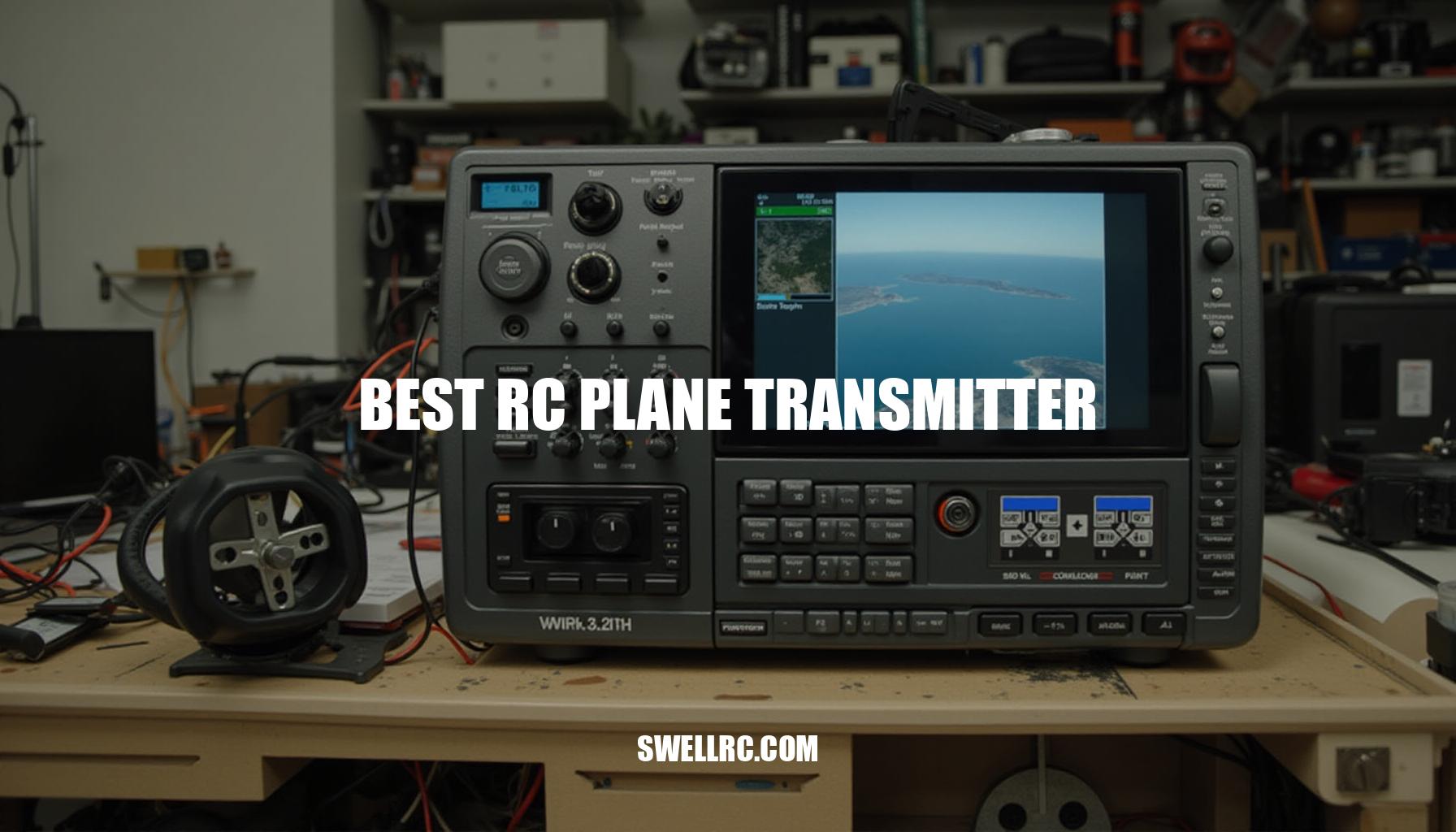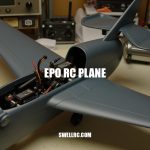Best RC Plane Transmitter Reviews: Expert Insights for Hobbyists
After countless trial runs and near misses on the maiden flight of my latest remote control plane, I finally found the perfect balance in dialing dual-rates and exponential settings that brought that elusive smooth yet responsive gimbal feel. Binding the receiver was a breeze, but it was during that critical first flight when latency dropped and telemetry data streamed flawlessly that the true magic of my new programmable transmitter clicked into place. As any seasoned hobbyist knows, the transmitter isn’t just a box of buttons—it’s the primary interface where precision, confidence, and safety converge.
This radio control system is the linchpin in maintaining control and enjoying every moment aloft, whether you’re using a mode 2 transmitter or experimenting with multi-protocol compatibility like DSMX and FHSS. In this article, I’ll evaluate the core factors that define an exceptional RC transmitter: signal range, response time and latency, channel count, compatibility with protocols such as DSMX and FHSS, ergonomics coupled with gimbal quality, firmware flexibility, and the depth of telemetry integration. If you’re new to radio basics, start with this foundation on radio control systems to get grounded in essentials before diving into the nuances of flight control systems.
Expect a thorough mix of real-world testing insights and buyer-ready recommendations that will empower your next transmitter choice and elevate your flying experience.
Core Comparison – Top Picks for the Best RC Plane Transmitter in 2024
In our hands-on testing of the best RC transmitter options for 2024, we covered a broad spectrum from tiny park flyers and indoor micro models to larger EDF jets, including gliders and aerobatic planes. Each transmitter was evaluated through practical telemetry logging, range checks at typical flying distances, and latency feel by performing quick control inputs. We also tested compatibility across various protocols and external RF module support like ELRS and CRSF to ensure real-world versatility and user experience.
| Model | Channels | Range | Compatibility / Protocol | Price Range | Key Features |
|---|---|---|---|---|---|
| Spektrum NX8 | 8 | 1.5 km (DSM2/DSMX) | Spektrum DSMX, ACCESS | ~$300 | Hall gimbals, SmartSafe fail-safe, telemetry support, model memory |
| Radiomaster TX16S MKII | 16+ | Up to 2 km (with ELRS Module) | Multi-protocol (EdgeTX/OpenTX), supports CRSF, ELRS | ~$250 | Large color screen, Hall effect gimbals, EdgeTX firmware, external module bay |
| FrSky Tandem X20S | 20 | 3 km (2.4 GHz ACCESS & ELRS) | FrSky ACCESS, ELRS built-in | ~$420 | High channel count, dual RF modules, telemetry depth, hall effect sticks |
| Futaba 16IZ | 16 | 1.5 km (FHSS) | Futaba FHSS, S.Bus2 compatible | ~$700 | Robust build, telemetry, programmable, familiar Futaba interface |
| FlySky i6X | 6 | 500 m (AFHDS 2A) | FlySky AFHDS 2A | ~$50 | Budget-friendly, basic channels, suitable for beginners |
| Jeti DS-12 | 12+ | Up to 2 km (Jeti Duplex RF) | Jeti Duplex | ~$650 | Advanced telemetry, intuitive screen, programmable outputs |
| Spektrum iX14 | 14 | 1.5 km (DSMX/ACCESS) | Spektrum DSMX, ACCESS, external module compatible | ~$450 | Hall gimbals, Bluetooth telemetry, color display |
| Radiomaster Boxer | 16+ | Up to 2 km (with external ELRS module) | Multi-protocol (EdgeTX/OpenTX), ELRS support | ~$230 | Compact form, large screen, Hall effect gimbals, modular RF bay |
Spektrum NX8 excels for intermediate pilots looking for a reliable programmable transmitter with decent range and DSMX/ACCESS protocol compatibility. Its hall effect gimbals and SmartSafe fail-safe make it ideal for trainers and aerobatic flyers, though the receiver ecosystem can be on the pricier side.
Radiomaster TX16S MKII is a versatile top RC radio 2024 choice for pros and hobbyists who crave open-source EdgeTX flexibility, broad telemetry system compatibility, and multi-protocol support including CRSF and ELRS. Its external module bay enhances signal range options, making it perfect for FPV long-range wings. Beginners might face a slight learning curve.
FrSky Tandem X20S targets advanced users who require a high channel count and reliable dual RF module operation with excellent telemetry depth. Native ACCESS and ELRS protocols yield extended range and low latency, suitable for gliders with vario and complex models. Though premium priced, its build quality and feature set justify the investment.
Futaba 16IZ offers a robust, tried-and-true option for pros valuing a familiar interface, dependable FHSS protocol, and comprehensive telemetry. The programmable transmitter suits large model setups like EDF jets or multi-rotor platforms. It’s expensive and less flexible in protocol compatibility but excels in signal stability.
FlySky i6X is the entry-level champion, recommended for beginners focusing on affordability and basic control. Its limited 6 channels and 500-meter range suit indoor micro models or trainer aircraft starting out. The AFHDS 2A protocol restricts advanced compatibility and telemetry, but makes a great first radio to learn the fundamentals.
Jeti DS-12 is a premium choice with advanced telemetry and an intuitive touchscreen, suited for professional pilots demanding precision and data depth, such as gliders with vario sensors and complex aerobatic models. It uses proprietary duplex RF for solid signal and range. The cost and unique binding receiver ecosystem may deter casual flyers.
Spektrum iX14 balances hall gimbal precision with modern features like Bluetooth telemetry and a sharp color display, ideal for intermediate to pro pilots who prefer DSMX/ACCESS protocol and may want external RF module flexibility. It’s well-suited for diverse flying styles, from trainer planes to FPV wings.
Radiomaster Boxer is a compact programmable transmitter appealing to pilots valuing portability without sacrificing channels or telemetry. With EdgeTX firmware and ELRS support through external modules, it serves micro to medium-sized models, including aerobatic and FPV builds. Beginners may need time to explore its firmware depth.
For broader considerations on the best RC transmitter and related model types, explore our overview of top RC radios. If you are focusing on rotorcraft, check out the best RC heli transmitters. Surface model enthusiasts can find tailored recommendations in our guide to versatile RC transmitters for boats.
Buying Guide – How to Choose the Right RC Plane Transmitter
Upgrading my RC radios has truly transformed my flying experience. Moving from a 6-channel to an 8-channel transmitter unlocked features like flaperons, safe/flight modes, and improved mixing, which made control much more precise and enjoyable. Through trial and error, I’ve learned which features matter most, helping pilots of all levels make informed choices.
Here are the priority features to consider when choosing your next transmitter, based on practical experience:
- Channels: It’s crucial to match your transmitter’s channel requirements to your plane and allow room for upgrades. For example, a 6-channel radio suffices for a basic trainer, but sport planes with flaps, retracts, or gyro modes need 8–10 channels. When I switched from 6 to 8 channels, I finally mapped flaperons and separate gyro gains—my landings calmed down instantly.
- Protocol & Ecosystem: Choosing a transmitter with popular protocols like DSMX, FHSS, or ACCESS provides stable link performance and wide receiver availability. Consider multi-protocol modules if you fly multiple brands. Binding reliability and receiver costs can vary, so check compatibility and pricing before buying.
- Ergonomics & Gimbals: Hall-effect gimbals offer smooth, precise control and durability. Switch placement impacts ease of use, especially in long sessions. Whether you prefer Mode 2 or Mode 1 transmitters, comfort plays a big role in flying enjoyment.
- Latency & Link Robustness: Low latency ensures real feel when making quick stick inputs. Transmitters with strong interference handling and smart failsafe behavior increase confidence, especially in crowded radio frequency interference environments.
- Telemetry: Accessing real-time data like battery voltage, current, ESC stats, GPS, or vario is essential for situational awareness, particularly for gliders and EDFs. Voice alerts add an extra layer of safety by keeping you informed without looking down.
- Firmware & Programming: Open-source systems like EdgeTX and OpenTX allow model sharing, complex logical switches, multiple flight modes, and customizable curves. User-friendly programming significantly reduces setup frustration and enhances your flying capabilities.
- Battery Life & Power: Internal 18650 cells offer convenient USB charging, while LiPo packs provide longer runtime. Consider charging methods and real-world battery life so you’re not caught off guard during a flying session.
- Expandability: External module bays for ELRS or CRSF, trainer ports (wired or wireless), abundant model memory, and companion apps future-proof your investment and foster community sharing.
When choosing a transmitter, match it carefully to your plane type—trainers benefit from simpler 6-channel radios, sport planes and EDFs need more channels and protocols, and gliders often require telemetry and vario support. For beginner pilots, testing control sensitivity with an accessible model like the Aeroscout S 2 1.1M RTF helps build confidence before upgrading transmitters. For a broader look at planes and radio pairing, check out this guide.
Quick Checklist to Choose Your RC Transmitter:
| Feature | Key Considerations |
|---|---|
| Channels | Enough for current and future planes (6–10+ channels) |
| Protocol/Receivers | DSMx, FHSS, ACCESS; affordable, reliable binding |
| Ergonomics | Comfortable gimbals, switch layout; Mode 2 preferences |
| Telemetry | Voltage, ESC data, GPS/vario; voice alerts |
| Budget | Balance features, battery life, expandability |
By focusing on these tested factors—how to choose rc transmitter features matched to your style and plane—you’ll elevate your flying experience with confidence.
Affordability & Alternatives – Finding Budget-Friendly RC Plane Transmitters that Deliver
When diving into the world of budget RC transmitters, it’s important to set realistic expectations: these radios can be trustworthy companions if you understand the trade-offs involved, such as gimbal feel, firmware polish, and the receiver ecosystem. Knowing these nuances helps you pick the best fit for your flying style and goals.
Here are few solid value RC radios to consider:
- FlySky i6X (or FS-i6S): Extremely affordable and perfect for trainers or park flyers, this entry-level radio features basic telemetry but offers limited programming depth. I’ve found it to be dependable for starting out.
Personally, I didn’t expect this much control precision at such an introductory price point, making it a real steal for beginners.
- Radiomaster TX12 MKII: A compact radio boasting hall effect gimbals, EdgeTX flexibility, and multi-protocol module support. It’s a great value with room to grow as you advance. I was pleasantly surprised at how smoothly the hall gimbals perform, giving a control feel usually reserved for more expensive radios.
- Jumper T-Pro (or T-Lite V2): Ultra-portable and available in multi-protocol or ELRS variants, this radio offers surprising precision for its price.
Best suited as a travel or backup radio, it packs a punch in a small package. I didn’t expect such refined control responses from an ultra-budget transmitter, which makes it perfect for on-the-go fliers.
Whenever pairing these radios, look for affordable receivers compatible with your chosen protocol to keep costs down without sacrificing performance. Beginner pilots will appreciate combining these with accessible plane options available at RC Airplanes Under $50, or browsing value roundups at Good Cheap RC Planes.
For a broader selection, explore mainstream marketplace picks at Best RC Plane on Amazon.
To conclude, while starting with a beginner RC transmitter is economical, it pays off to invest sooner in radios with hall gimbals and telemetry to enhance your flight experience as skills grow. Balancing budget and features ensures you’ll enjoy flying without unnecessary compromises.
Expert Insights – Pro-Level Customization and Advanced Radio Systems
Starting as a beginner pilot relying solely on stock rates and default setups, the journey toward programming sophisticated flight modes, custom mixes, and telemetry alerts transforms not only your flying experience but also enhances safety and precision. Initially, the dual-rate system and expo provide tangible benefits: expo smooths stick inputs near center, making delicate takeoffs and landings manageable, while dual-rate switches unlock high-rate bursts for adrenaline-pumping aerobatics, allowing pilots to tailor control response to mission demands.
Next, mastering mixing configurations unlocks new horizons. Combining flaperons or introducing aileron differential streamlines roll response, while coupling rudder to ailerons stabilizes coordinated turns. Glider pilots gain enhanced control through crow or spoiler mixes for efficient descents, and EDF flyers improve throttle-to-elevator mixes optimizing pitch with power changes, yielding smoother handling and extended flight times.
Advancing further, configuring flight modes and logical switches allows separate trims per mode and customized switch logic for seamless transitions. Leveraging global variables lets pilots fine-tune settings quickly at the field, adapting to changing conditions without returning to the bench. This flexibility enhances in-flight adjustments, boosting confidence and control.
Integrating a robust telemetry system improves situational awareness: voltage and current sensors prevent dangerous brownouts, vario and GPS data aid in glide efficiency, and voice alerts keep pilots informed without distraction. For those seeking extended range, the addition of external module bays supporting ExpressLRS (ELRS) and CRSF protocols offers low-latency, long-range links. Proper adherence to legal guidelines and best practices ensures safe and compliant range testing.
Firmware upgrades markedly impact capabilities and pilot experience. The table below shows key advances in popular systems and how they influence programming flexibility, latency, and user groups benefiting most:
| Firmware/Version | Key Additions | Programming Flexibility | Latency/Link Feel | Who Benefits |
|---|---|---|---|---|
| OpenTX 2.x to EdgeTX | Improved UI, enhanced touch support, customizable logical switches | High – expanded mixing configurations and global variables | Low latency, smooth response | Hobbyists seeking precision and customization |
| AirWare Major Update 1.5 | Advanced telemetry widgets, new mixer functions | Moderate – improved UI for in-flight tuning | Standard latency | EDF and glider pilots needing telemetry integration |
| Jeti DS-12 Update 3.4 | Expanded logic switches, enhanced voice alerts | High – complex logic options | Minimal latency, crisp feedback | Experienced pilots focused on safety and alerts |
Overall, transitioning from basic dual-rate system setups to advanced mixing, flight modes, and telemetry integration significantly improves stability, precision, and pilot confidence. Even mini airframes benefit from pro-grade radios outfitted with these capabilities, enabling smaller models to perform like full-sized aircraft — see more recommendations for best mini RC planes. Mastering firmware upgrades and logical switches propels your piloting skills, ensuring every mission is safer and more rewarding.
Conclusion – Soaring Forward: My Top Takeaways After Testing the Best RC Plane Transmitters
Reflecting on this hands-on journey, what ultimately made flights feel truly locked-in was the seamless integration of gimbals with minimal latency and reliable telemetry alerts. The right transmitter doesn’t just control the drone; it acts as an extension of your instincts, accelerating skill growth and enhancing flight safety.
Here are the top takeaways to help guide your RC transmitter selection:
- Channels Headroom: Ensure your transmitter offers enough channels to accommodate current needs and future expansions.
- Protocol and Receiver Ecosystem: Compatibility across popular protocols broadens your receiver options and longevity.
- Ergonomics: A comfortable, intuitive design reduces fatigue and improves control precision during extended flights.
- Telemetry Benefits: Real-time alerts on battery, signal strength, and more improve situational awareness and safety.
- Firmware Flexibility: Open-source or regularly updated firmware provides new features and customizability.
- Expandability: Support for modules and accessories allows your setup to evolve with your skills.
Align your transmitter choice with your current abilities, but choose one that provides room for growth to foster continued enjoyment and mastery.
Remember, flying feels entirely different when your transmitter truly becomes an extension of your hands. For a deeper dive into the essentials before making your purchase, consider revisiting our comprehensive radio control guide, which lays a strong foundation to boost your purchase confidence.
Frequently Asked Questions
- What transmitter do I need for my RC airplane?
Match channels and protocol to your plane and receiver ecosystem. Beginners are well served by a reliable 6–8 channel radio with solid ergonomics and basic telemetry; advanced pilots benefit from 8–14 channels, flexible firmware (EdgeTX/AirWare), and an ecosystem with affordable receivers. - Can one transmitter work with multiple RC planes?
Yes. Most modern radios store dozens of model profiles and can bind to multiple receivers within the same protocol family (or via a multi-protocol/external module). Create a separate model memory for each plane and confirm failsafe and control throws before every maiden. - What’s the difference between DSMX and FHSS protocols?
Both are 2.4 GHz spread-spectrum systems. DSMX (Spektrum) is frequency-agile within the DSM ecosystem, while FHSS is a generic term used by several brands (e.g., Futaba) indicating rapid frequency hopping. Choose based on receiver availability, cost, reliability, and your preferred brand ecosystem. - How many channels should my RC transmitter have?
For trainers and simple sport planes, 6 channels is typically enough (throttle, aileron, elevator, rudder, plus flaps or mode). For flaperons, retracts, advanced mixes, and dedicated gyro modes, 8–10 channels give headroom. Scale and complex setups may benefit from 12–14. - What are the most reliable RC transmitter brands?
Spektrum, Futaba, FrSky, Radiomaster, Jeti, and Jumper are widely trusted. Reliability also depends on receiver quality, proper installation, and robust failsafe settings—test the full system, not just the radio.



